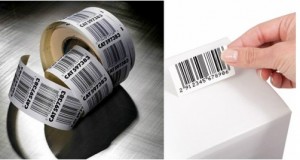When looking for the right kind of barcode labels for the products, you have several options to choose from. It is important for you to know about different uses of each of them as well as limitations to help you narrow down your options. Read on to know about different types of barcodes available and choose the right one for your requirement.
. One-Dimensional or 1D Barcodes – One-dimensional, or 1D barcodes denotes data by the spacings and widths of parallel lines. This is also known as one-dimensional or linear barcodes. These consist of some of the traditional, or most popular barcodes like EAN and UPC code types.
· UPC barcodes – They are mainly used to scan and label consumer goods at the time of sale all over the world, mainly in the Unites States, United Kingdom, New Zealand, Australia and several other countries. UPC-A variation encodes 12 numerical digits while UPC-E is a small variation that encodes 6 numerical digits only. Make sure you buy barcodes that are used in the retail sector.
· EAN barcodes – EAN barcodes are used for labeling consumer goods globally at the time of selling and scanning, mainly in Europe. These look quite similar to UPC codes, and the main difference lies in its geographical application. While EAN-13 consisting of 13 digits is the default form factor, EAN-8 barcodes has 8 digits on the products where there is only limited space available.
· CODE 39 – Code 39 barcodes are used for labeling goods across different industries. They are usually found in the US department of Defense nada automotive industry. It enables using both the digits and characters and its name can encode only 39 characters although character set has been increased to 43 in the latest version.
-
CODE 128 – Code 128 barcodes are high-density and compact codes which are used in transportation and logistics industries for distribution as well as ordering. These barcodes can store varied information because they support all characters of ASCII 128 character set.
· CODE 93 – Code 93 barcodes are mainly used in logistics for categorizing packages in the retail inventory, electronic components, and provide delivery information. Just like Code 39, Code 93 also comes with ASCII support, however it improves complements Code 39. It allows additional security within the barcodes, and their compact sizes make the labels 25% short than the barcodes produced in Code 39.
· CODABAR – Codabar barcodes are used by healthcare professionals and logistics. The main benefit associated is that it can be printed easily and produced by a typewriter or impact style printer. Thus, a user may create several Codabar codes by using consecutive numbers. Codabar is a self-checking symbology that encodes almost 16 different characters with an extra 4 start/stop characters. It was planned to be understandable when printed with dot matrix printers.
Thus, these are the most common types of barcodes you should be aware of. You should also have a proper understanding of when, where and how these barcodes are used throughout the world in different industries.









